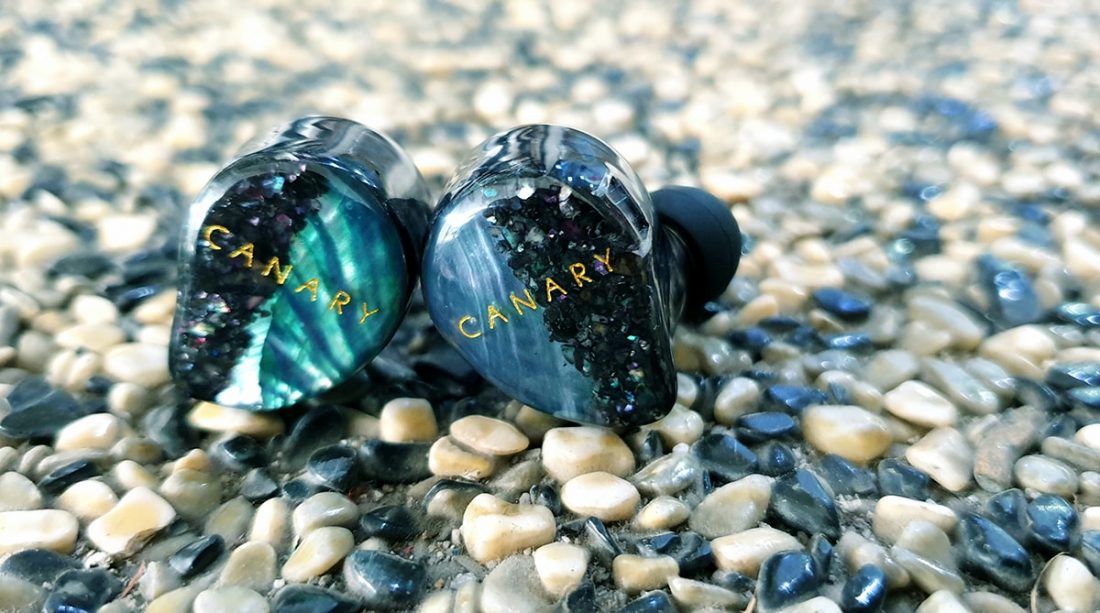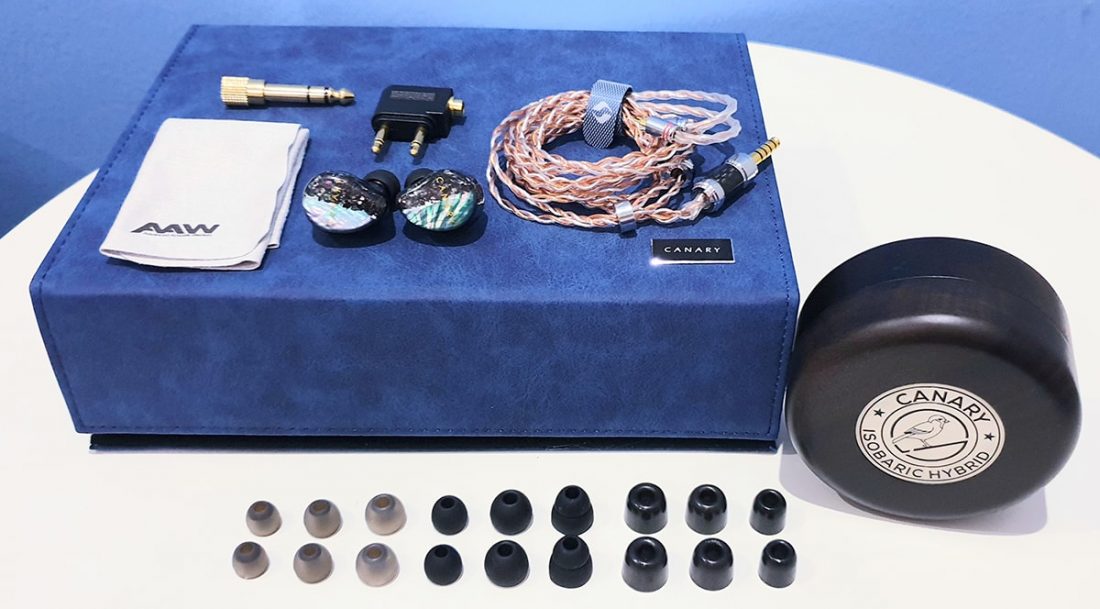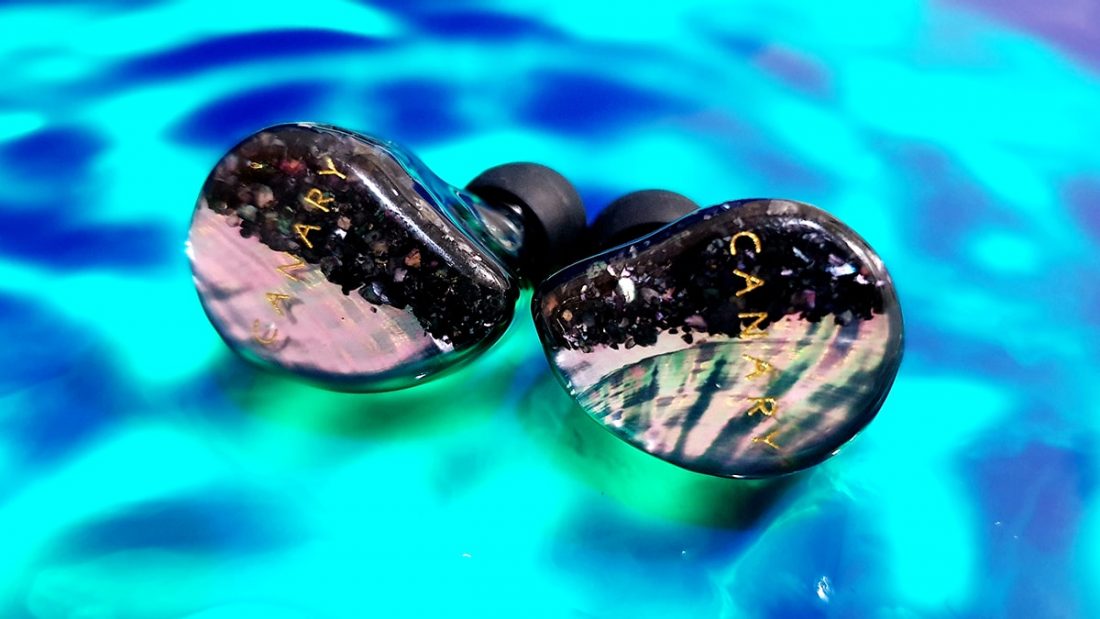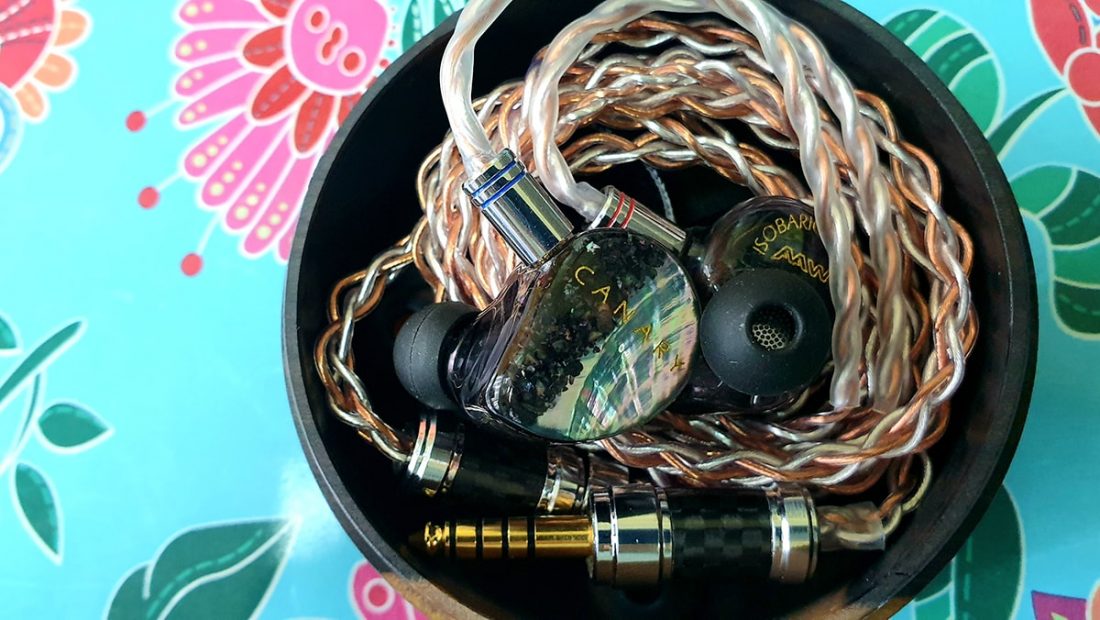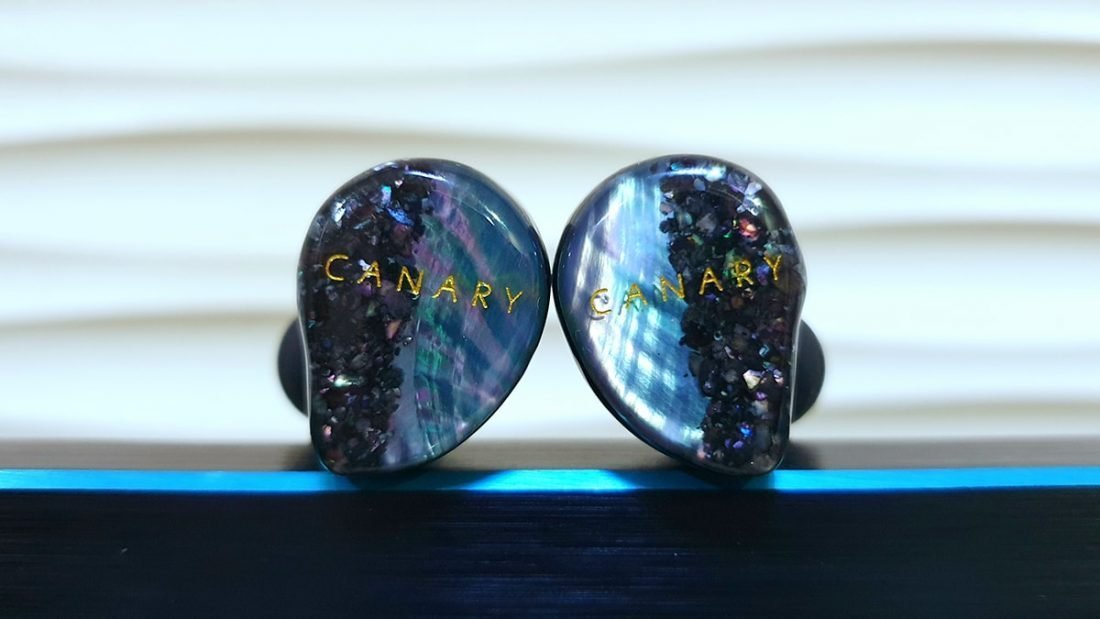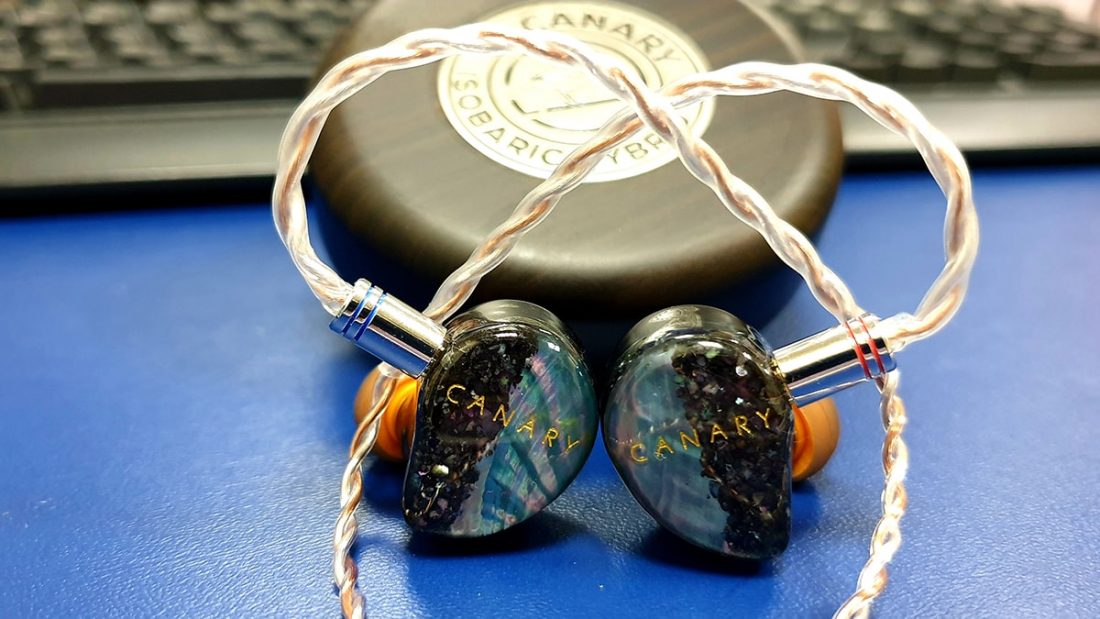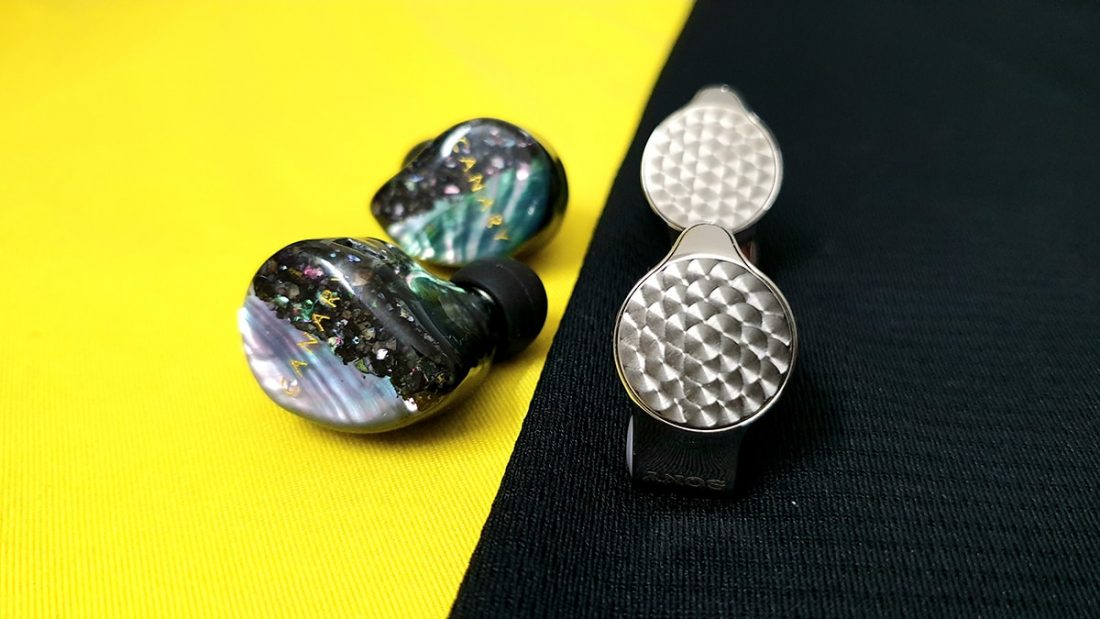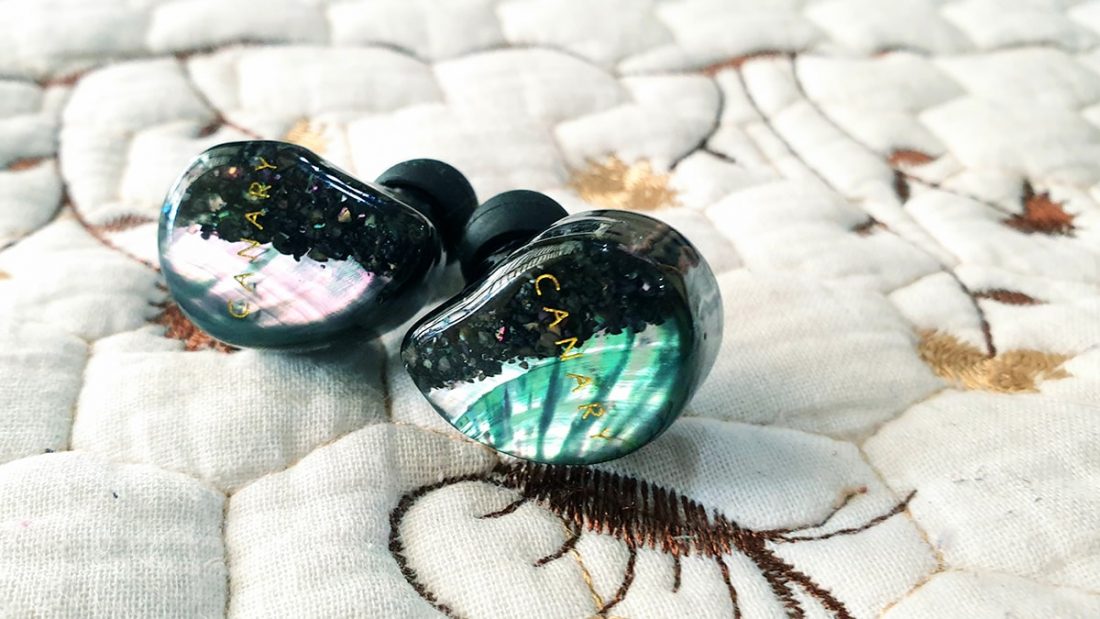As a child, I loved bird-watching. Not having the equipment nor financial means, I observed the common birds around my house. I was fascinated by how sparrows could only hop, and intrigued by the crow’s feral caw. Then as a teenager, I still loved bird-watching, but of a different, more exotic, female sort. Err… let’s move on.
Potent Potions
So it seemed only natural that I come full circle and review something with a bird name, the Canary. Advanced AcousticWerkes (AAW) is one of the leading custom in-ear monitor (CIEM) makers based in Singapore. Dubbing themselves the “mechanics of sound,” they are well-known for their hybrid game, combining a multitude of drivers with in-house technology, often with breathtaking results. I have been fortunate to own their previous two flagships, the already discontinued W500 and W900. They were well-executed hybrid flagships that gave me some heart-warming memories, even nostalgia, like that Transformer toy that I was always fond of, took great care of, but somehow managed to lose. I know it’s you, ma, but that’s fine.
A New Challenger
The past year has seen a triple hybrid arms race shaping up among high-end IEM makers. This new breed of hybrid is fond of utilizing three different drivers for specific parts of the sound spectrum. Dynamic drivers (DDs) for bass, balanced armatures (BAs) for mids, and brand-spanking-new miniature electrostatic (EST) tweeters for the treble.
Magic Beans
That’s not all. The dual 6mm DD woofers are of an isobaric design, operating simultaneously within a common enclosed space in a push-pull configuration to eliminate phase non-linearities, theoretically minimizing distortion, and keeping the bass as linear as possible. It’s a mouthful, just know that they went the extra step for the bass, ok? Finally, lassoing the hodgepodge of drivers together is AAW’s new 4-way passive and acoustic crossover, dubbed the TruXross+. It sounds like a gym routine or a protein shake, but in reality holds the sound signature together to hopefully deliver a coherent and believable sound signature. The Canary is available in universal or custom versions. The universal retails for $2,199 and is available from Null Audio (AAW’s sales arm) or direct from AAW. The custom prices start from $2,449 depending on customization and can be ordered via Null Audio. I would like to thank Kevin Wang and Dr. Xuan of AAW for the amazing communication and discount price offered to make this review possible.
Equipment Used:
DAP
Sony NW-WM1A “K” Modded, FW 2.0
IEMs
Advanced Acousticwerkes Canary 64 Audio tia Fourté Sony IER-Z1R
Albums Listened
Amber Rubarth – Sessions from the 17th Ward Bruno Mars – 24K Magic Daft Punk – Random Access Memories Denean – The Weaving Fleetwood Mac – Rumours Kendrick Lamar – To Pimp a Butterfly Leonard Cohen – You Want It Darker Michael Jackson – The Essential Rage Against the Machine – The Battle of Los Angeles Taylor Swift – Reputation
Technical Specifications
Drivers: Isobaric Dual Dynamic Driver & 4x Balanced Armature Driver & 2x Electrostatic Driver Freq. Response: 5Hz – 100KHz Sensitivity: 100db SPL @ 1KHz Impedance: 12Ω @ 1KHz THD: <=0.5% @1mW @1KHz Crossover: 4-Way TruXross+
Packaging and Accessories
You’re greeted by a leatherette semi-hard box in a two-tone scheme normally reserved for fancy furniture catalogs. What’s more, the box comes with velcro separators to organize your digital audio player (DAP), a couple of pairs of IEMs and spare cables. The box is an ingenious solution for your portable setup, marvelously executed by AAW. I’m chuffed beyond words.
You Complete Me
The accessory set is quite complete too. The Canary is supported by the luxurious Symphonym Hakone cable, an elegant African blackwood hard case, flight adapter, 1/4″ adapter, cleaning cloth, and a bounty’s worth of ear tips. You have three sets of transparent silicone, black silicone and foam tips in small, medium, and large sizes, plus an additional pair of medium-sized double-flanged black silicone tips. If first impressions count, the Canary has one foot (or wing) through the door already. The unboxing was first class, and the presentation emanates elegance. I will use a different case other than the African blackwood to keep the wood spotless, but that’s just vanity on my end.
Design and Build Quality
If you chose the custom version, this section is irrelevant, but if you stuck with the universal like me, the design is pretty sweet too. The Canary is large, make no mistake, because of the number and variety of drivers inside. You could admire them all day – thanks to the understated transparent smoke shells – and appreciate the intricate driver positioning, the neat solder points, and disciplined wiring work. It boggles the mind what a steady, skilled pair of hands can do. The faceplate is another source of wonder. The hypnotic beauty features a mix of mother-of-pearl and crushed shell, which gleams and glimmers in different colors, depending on the angle you look at them. Photographs won’t do them justice; you have to hold them in your hands to really appreciate them. If first impressions count… wait I think I mentioned that already.
Heavy Metal
The Canary is made of a hunk of acrylic with some exotic material for the faceplates, plus an aluminum nozzle to slide your ear tips in. Unsurprisingly, the nozzles are the most durable part of the IEM. The build quality isn’t suspect, and knowing AAW’s experience with IEMs, I don’t question their workmanship at all, but as with all things plastic, try not to drop them, and keep them protected in a case at all times. Better safe than sorry, yeah?
Cables
Are upgrade cables worth it? The Canary flies in the face of that question and smacks you with the $299 Symphonym Hakone cable that comes as standard. That’s 300 smackeroos of upgrade you didn’t know you needed. The Hakone is made by Null Audio, drawing from years of experience in making value-oriented, well-built cables. Symphonym is their first step into high-end territory, and a grand entrance they do make.
Excuse the Jargon
So how does that translate to you, dear user? Cutting through the marketing clutter, you get a cable built to last. Hakone is sturdily, dependably built and carries a clean, clear signal from the source to your IEMs. Cable ergonomics are excellent. It is soft and flexible, devoid of stiffness, and unsightly memory effect. The parts used are high-end too, tastefully decked in chrome-plating. The Y-split and jack share a matched, aesthetically pleasing carbon-fiber motif. As for the sound, they complement the Canary perfectly. Intricately detailed across the spectrum, they provide adequate body to the notes too. The mids take center stage, zesty and lively, and brought slightly forward. The staging is spacious and airy with clear-cut imaging, brought out by a background as dark as midnight. Make no mistake, Hakone will tick your upgrade box at no extra cost.
Fit, Comfort, and Isolation
The Canary, she is one thick bird. Don’t get me wrong, a lot of flagships are on the larger side because of the number of drivers, and the Canary is no different. The large shells fit nicely into my ears, but it looks blockier than it is ergonomic, and I foresee customers having fit problems due to the magnitude of the shells. Try before you buy, don’t assume your ears are the largest in the land, lol. Like cats, if it fits, I sits. If you manage to stuff the Canary into your ears, they convey excellent comfort because of the smooth, lightweight acrylic housing. I wore them for hours without ear fatigue, physically or acoustically. AAW makes this look easy, being so adept at making both custom and universal IEMs.
You Talking to Me?
Sound isolation is excellent, which surprised me. Hybrids are normally vented so that the dynamic driver is allowed to breathe and move air, but here the vent is so tiny you might even miss it. So Canary is capable of isolating up to 90% of outside noise, which is very welcome if you’re the kind of guy who listens while you commute, albeit with much more expensive taste.
Sound Quality
Another day, another flagship, eh? The summit portion of IEMs is fast becoming saturated, with premier brands battling it out for a piece of that sweet, sweet hobbyist pie. Before this, the most expensive flagships tend to have had the most BA drivers, but today, they have custom-tuned BAs, new-fangled drivers like the EST, and patented technology with funny names. The costs? Astronomical. The risks? Extreme. Are we ready to play? Let me check my bank account.
Overall Sound Signature
In the big, vague dictionary of describing sound signatures, I find it a bit of a struggle to pigeonhole the Canary, pun fully intended. It has something for everyone, a bass worthy of a good dynamic driver, detailed mids riding on gobs of air, and a sparkly, resolving treble. None of them take precedence over the other, but the Canary sounds far from neutral as well. So where does that leave us? A balanced, ‘W’-shaped signature, which really is like a parent dividing his wealth equally among his children. But if you look deeper, you can see where the magic resides. One of the main gripes among hybrid IEMs is incoherence, the contrast between the natural-sounding DDs and the detail-oriented BAs, and Canary manages to minimize that.
W Stands for Wow
I have no idea what the TruXross+ crossover does, nor how to read it, but it works. Yes, individually, the Canary has the right ingredients in terms of the well-tuned bass, mids, and treble. That’s kind of expected. But combining three different drivers to work as a seamless, united collective, that is the Canary’s greatest achievement. The Canary’s sound signature breathes personality, with consistency throughout. From one end of the sound spectrum to the other, the notes have a unifying characteristic, as if they were sculpted from the same block of expensive metal.
That Song
The signature carries an abundance of air too. Around every note, around every instrument. It’s an ethereal, otherworldly sensation helped by the fact the Canary has a huge soundstage (and two oxygen tanks) to play with. Taken together Canary has a fun-loving signature that is easy to like, but not without its flaws. Everybody knows that the bird is the word.
Listening conditions
Critical listening was done after 100 hours of burn-in. These new mini-electrostatic drivers do not come with instructions, but I bet 100 hours of 1980’s spandex rock music would show them who’s boss. Rock out with your rooster out! The main review rig was Sony’s NW-WM1A Walkman modded by Project K with the Symphonym Hakone stock cable. The ear tips of choice were the provided medium-sized black silicone, which proved to be the best in comfort, while not compromising any nitty-gritty detail.
Bass
Michael Jackson once sang, “there’s a bass in your heart and I know that it is love,” but I might not be 100% right about that. The gloriously decadent sub-bass reaches the depths of your frozen heart and gives it a nice thump. Extension down low is among the best I’ve heard, and while it’s rather physical, it doesn’t overpower the signature and stays its steady course. Those hoping for a head-rattle or skull-crunch need not apply. The midbass is slightly more prominent and provides much of Canary’s rhythm and warmth. It is authoritative and hits hard, letting you know the dynamic driver is earning its paycheque and not just for show. Notes hit with great aplomb, full and natural, before retreating to the background and attacking again with remarkable finesse. It’s just relentlessly fun.
Playfully Sculpted
The most unique thing about the Canary’s bass is in the note characteristic. You will never accuse it of lacking body or thickness, yet the bass imparts a great deal of air because of the lightning-fast decay. The swift and precise decay is like active decluttering, leaving the stage spotless after the impact of the note. Just before the decay and the waft of air, there’s a lovely palpable texture to the notes that breeds excitement. Details are wonderfully rendered without sounding forced. There’s a tidy, minimalist approach to the bass that works so well. Clock in, do your job, clock out, party. And not a moment too soon. Bass and discipline rarely go hand in hand but the Canary demonstrates this excellently.
Mids
On the wings of an angel, the mids glide in. Like a celestial being descending upon us mortals; the mids emit power and dynamism wherever they go. The mids are solid and rich but retain admirable speed and texture, similar to the bass. Notes alternate from thunderous to feather-light in a snap, and are lovingly surrounded by copious quantities of air, with each note clearly, carefully delineated. Floating in mid-air, the angel speaks and we listen. The boldness of the notes makes its presence felt, and captures our outright attention, before decaying ever-so-quickly with ungodly velocity.
The Airy Fairy
The highly resolved, vivacious and lively mids are an enthralling listen, breathing life into vocals, strings, and acoustics. They are expertly balanced from the lower to upper mids, weaving in seamlessly from the bass, before rising to meet the apex of the treble. However, the angel is a new arrival to our world and is not accustomed to our ways. To give off the majestic dynamism and sense of epicness, tone and timbre are, unfortunately, set aside. Instruments and vocals sound dramatic and intense, but less natural and true-to-life. In some instances, a slight metallic sheen can be heard at the note edges, robbing the music of emotion and immersion, the last step to letting you truly become one with the music. ‘Tis a pity, my angel!
Treble
You have new-toy syndrome, and so do I, so let’s delve into the brand new miniature EST drivers. I suspect that the Canary’s overall sound signature was tuned to accommodate the treble and its special tonal characteristics. The signs are all there. Like the best full-sized electrostatic systems I’ve heard, the transients are blazing-fast; notes are big, airy and detailed; and the decay is swift and texturally satisfying.
Scratch That Itch!
The treble is exciting and dynamic, with both lower and mid-treble peaks, so you would not hunger for more sparkle. The more it rises, the bigger you smile, as the EST treble is more than capable of delivering obscene amounts of fresh, crispy, crunchy detail. Each lovingly shaped note playfully tickles your ear canals and provides gratification like the hardest scratch to the biggest itch. The treble is tuned by steady, gentle hands though, and retreats to a smooth finish just before the euphoria proves too much, skilfully avoiding harshness and sibilance. This is a winning, well-controlled treble worthy of an electrostat, with only two minor shortcomings: the upper-end extension is limited, clipping the wings of a magnificent, sweeping signature; and the timbre is, once again, too colored to be natural. Its keen sense of dramatic flair compromises a simple, organic sound.
Soundstage and Imaging
Birds conjure ideas and fantastic images of freedom, flight, and fancy. If you’re going to name your latest series of IEMs according to birds, you best make sure the soundstage is both airy and spacious. And luckily for Canary, it is one of the biggest I’ve heard. The stage width is simply astounding. Left to right imagery is surreally massive and grand, with a gargantuan scope normally reserved for multi-part movie trilogies. Sounds can be heard a couple of feet away from my ears, I kid you not. Just a step behind are the height and depth, not as jaw-dropping as the width but still very, very efficient. If you listen to binaural tracks, you’re in for a luxurious treat.
Razor’s Edge
I saved the best for last though. The separation and imaging the Canary is capable of is worthy of a place amongst the pantheon of the Gods. I have not heard another IEM with imaging as razor-sharp and pin-drop accurate as the Canary’s. You could blindfold yourself (or really, just close your eyes) and demonstrate the exact, minute location of each instrument or vocal element should you choose to. Borrowing another bird analogy, the imaging is so clear, you could zoom in like a hawk careening towards its grounded prey from the skies, granting death from above. The ease of separation of every facet in the music is aided by the tremendously black background, immaculate staging, and the hurried decay of each note.
Comparisons
64 Audio tia Fourté
Come meet your daddy, Canary. 64’s Fourté is arguably the industry’s first triple hybrid consisting of DDs, BAs, and mangled BAs… uh, I mean tia drivers. Even at its advanced age, Fourte seems to act more like the excited teenager in the room, while Canary is the level-headed protagonist. Fourté drives up the excitement levels, supplying bigger bass and treble, essentially more U-shaped than Canary. Sub-bass is better felt, while midbass is fuller and looser, traipsing into basshead territory. Fourté brings the boom-boom, while Canary is more controlled and disciplined, although sometimes you wish he’d loosen up a tad.
Too Much Love Will Kill You
At the other end, Fourté’s magnificent treble surpasses the Canary in extension and sparkle, but its single-mindedness in detail and transparency means it can sound harsh and unforgiving. Canary’s comparatively grounded treble sounds more accurate and easier on the ear, although losing out in resolution. Despite Canary’s best efforts, Fourté remains the king in soundstage size, pipping the bird in all dimensions. However, Canary’s laser-guided imaging precision shines through, putting Fourté to the sword. Canary’s not done though, hacking at Fourté’s biggest weaknesses to steal victories in mids tuning and overall coherency.
Torn Between Two Lovers
Neither of them will be called the most natural listen anytime soon, but Canary’s mids are relatively thicker, lusher and filled with more emotion. Fourté’s incoherence is its biggest weakness, with the warm bass contrasting sharply with the cold upper mids and treble, forming an inconsistent soundscape. Canary steamrolls over Fourté in this department with unity and discipline. Overall, Fourté is the king of excess, a hedonist’s dream IEM with the biggest bass, treble, and soundstage. It’s gaudy and bawdy with a very niche appeal. Canary is a more cultured all-rounder that retains a knack for fun, earning respect and acclaim the more you listen.
Sony IER-Z1R
Canary is so good it inadvertently summoned the secret boss battle. Sony’s flagship IEM is one of the best-tuned hybrids to my ears, using a unique 2DD+1BA configuration. Housed in rock-hard zirconium casing, the Z1R was love at first sight, touch, and listen for me. I admit having some emotional attachment to them. What’s more, the Z1R costs significantly less than Canary or Fourté. Like Fourté, Z1R takes on a U-shaped signature, while Canary is more evenly balanced. The Canary has a higher-detailed and textured bass, but the Z1R floors it with an almighty bass thump and woolier midbass which sounds positively speaker-like. This is Sony’s lifelike tuning at its finest, and boy does it show off.
Epically Epic
For the mids, Canary has a forward placement with meatier notes, while the Z1R is more distant and leaner, especially from the lower to middle mids. The Sony is also guilty of grainier upper mids, but that’s all the frailties cleared up. In terms of tone, Canary’s airy mids can’t touch what Z1R is capable of. The Sony steps up a gear with a more engaging, natural vocal performance, and an altogether more organic timbre. Canary’s treble is expertly balanced, showcasing excitement and air in equal measure but staying clear of sibilance. The Z1R sounds hotter and fatiguing in comparison and is probably the only potential dealbreaker of this stellar IEM. They are pretty even in soundstage size (and both are tremendous), with the Z1R edging out in depth. Canary excels in layering and imaging accuracy yet again, proving a true champion in the category.
The Air Up There
Both excel in their own ways and are equally worthy of top-of-the-line (TOTL) status. Sony’s Z1R is just unadulterated sonic goodness, the amalgamation of their tried-and-perfected house sound. And Canary? A supercharged IEM with a pleasing all-rounder signature. The era of hybrids has truly begun, and it won’t be stopping anytime soon. I am just fortunate to be able to sample the upper echelons of portable audio.
Final Words
The new miniature EST drivers ain’t cheap and hope to drive the high-end IEM industry forward. But like mastering a new character in Street Fighter after settling on Ryu for years, it’ll take time for the technology to mature. Canary is part of the first wave of EST-powered flagships, along with Vision Ears’ Elysium and Jomo Audio’s Trinity, just to name a few examples. Canary possesses an addictive quality that pulls me in to listen for hours on end. Besides the well-balanced, eloquent and highly transparent signature, Canary brings flash, flourish, and flamboyance wherever it goes. The bodied notes, dynamic tuning, and giddy amounts of air breathe new life into the music and elevate the experience to new, unknown heights.
The Show Must Go On
And as with any consummate showman, nothing matters more than the performance. Even when you commit an error, you have to make it look good and pretend it’s all part of the act. Canary doesn’t possess the most accurate timbre nor the most natural tone, but its gung-ho spirit and youthful energy more than compensate for that. It’s a top-level IEM to let your hair down and rock out to, regardless of who’s watching. All aboard Air Canary.
